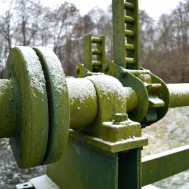The environment plays a major role in the effectiveness of rubber o-rings. In fact, weather conditions and ozone are some of the most common causes of o-ring failure.
When designing a rubber o-ring, it’s important to consider how much exposure to ozone and weather the rubber can handle, as well as the expected life of the rubber product. This will ensure that the o-ring is designed to last under specific conditions and avoid detrimental failure.
Here’s a closer look at the effects of weather on your rubber o-ring and how to properly handle it.
Weather Conditions
Every rubber elastomer is formed to handle specific conditions. When the wrong o-rings are exposed to outside weather conditions, such as extreme heat, cold or water, they will begin to experience adverse effects such as stiffness, cracking and degradation. These are important conditions to look out for when designing your o-ring.
- Extreme heat exposure: Over time, this can cause the o-ring to harden to the point of becoming brittle and will eventually fall apart
- Extreme cold exposure: The cold can cause o-rings to lose flexibility, crack or resist deformation pressure, which causes leak paths to form
- Water: When an o-ring is not compatible with a fluid, such as water, it may absorb the fluid like a sponge and swell to the point of malfunction
Keep in mind that air pollutants, humidity and air composition also play a role in the effectiveness of your o-ring, so be sure to monitor and replace your o-ring when necessary.
Ozone Cracking
O-Rings are naturally exposed to ozone when they are applied in an outside environment. When measuring air composition, outside air can have up to 0.01 ppm of ozone at any given time. The presence of electrical equipment or lightning can increase the ppm level even greater.
When an o-ring is exposed to ozone, the ozone may attack rubber by disrupting the polymer chain. An attack usually occurs at the most sensitive areas of the seal, such as the corners or edges where the seal is experiencing the most stretch. When the chain is disrupted, the polymer is left with a small empty space, which forms into a crack. Cracking creates leak paths, which can cause critical damage to an application.
To avoid ozone cracking, stay away from Nitrile (Buna-N) and Natural Rubber, as these elastomers are the least compatible with ozone. Employ o-ring elastomers that offer the most resistance to ozone attack, including:
- AFLAS®
- Epichlorohydrin
- Ethylene-Propylene
- Fluorocarbon
- Polyurethane, Millable
- Silicone
- Vamac®
O-Ring Failure Can Be Detrimental
A grave example of how weather conditions can have a fateful impact on o-ring success can be found in the 1986 Space Shuttle Challenger failure. As the shuttle began to launch, an FKM o-ring failed and was torn away by strong wind, which resulted in a catastrophic breakup. The o-ring was exposed to temperatures too low for its threshold, which led the o-ring to harden and break during launch. To avoid this in the future, the solid rocket motor (SRM) redesign changed these o-rings to Fluorosilicone for all future space shuttle missions. This is a true example of how much weight often lies in a single o-ring, and how weather conditions can play a huge role in the success or failure of a seal.
Have questions about the effects of weather on your o-ring?
Contact an engineer today.
